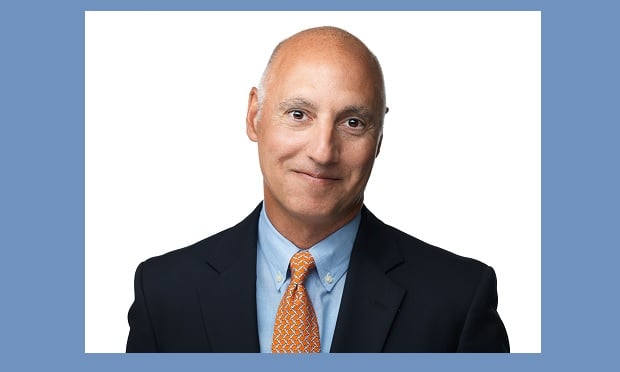With companies laying off employees by the millions, closing upfacilities or going out of business altogether, fueling a softcommercial insurance market, these are challenging times indeed forworkers' compensation carriers.
|National Underwriter sat down with Douglas D. Dirks,president and chief executive officer at Employers Holdings Inc.,based in Reno, Nev., during a recent visit to New York City, todiscuss how to overcome these and other emerging problems facingthe workers' comp industry.
NU: How do you view the state of the workers'comp market in terms of pricing and coverage?
|Douglas Dirks: The market isstill soft but stable, and is starting to harden. All in all, ratesare stable throughout the country.
|While we are beginning to observe a firming of the market, thereare some states experiencing both rate increases and decreases. Forexample, in California–where we do most of our business–the marketremains generally stable and the insurance commissioner approvedour additional average rate increase of 3 percent, which waseffective on March 15.
|However, this trend is tempered by steadily rising claims inCalifornia over the past 10 months, with a loss ratio at 30percent. Another significant market for us is Florida, where ratesare down 6.5 percent.
|NU: How is your company adjusting to theshrinking of the exposure base in workers' comp, thanks to massivelayoffs, businesses closing divisions or folding up altogether, andthe slowdown in new business startups?
|Mr. Dirks: Right now, the market is soft. Andwith falling payrolls we also see falling premiums. But we believeit is crucial to maintain our underwriting standards. Additionally,we will remain focused on the fallout and expense ratio.
|NU: Do you expect any changes in loss frequencywith all these layoffs? And how is your company remaining vigilantabout any potential increase in fraud?
|Mr. Dirks: We have seen no correlation in lossfrequency and soaring layoffs in that sense. We know that older andmore experienced employees are less likely to be injured on the jobthan younger, less experienced workers. However, even iffrequencies decline, the severity of injuries may increase becauseolder workers take longer to heal.
|We continuously have an eye out for fraudulent claims and runspecial fraud identification programs. Our claims examiners areaware of key indicators of possible fraud–for instance, claimsfiled on Mondays or after holidays and vacations.
|NU: With commercial insurance buyers cuttingback in these tough times, how do workers' comp insurers keepclients focused on loss control, safety and back-to-work efforts?Isn't this especially challenging for smaller employers withoutfull-time risk management departments?
|Mr. Dirks: Certainly, it is especiallyimportant for businesses of all sizes to remain focused on riskmanagement even during challenging economic cycles. We work withour small-business policyholders to help them identify theirlong-term business goals, which helps them maintain a strategicperspective even in a down economy.
|We offer our policyholders an array of value-added riskmanagement and loss control services that help them integratecommon-sense measures into their daily operations to maximizeworkplace safety.
|For example, we recently launched “Loss Control Connection,”which is our trademarked online risk management portal thatsimplifies the process of developing risk management programs thathelp reduce losses. We also offer a comprehensive return-to-workprogram, which aims to reduce lost time and increase productivityby getting injured workers back on the job as soon as possible.
|NU: What is your company doing to put a lid onskyrocketing medical care costs in workers' comp, particularly whenit comes to prescription drug coverage for pain?
|Mr. Dirks: Prescription medication is one ofthe fastest rising costs, especially in states like Nevada andCalifornia. We have to adapt to this circumstance and takeproactive measures to lower costs–for instance, by pre-authorizingexpensive medication or treatments. We have also established apharmacy benefit management program to actively manage this processand are rolling the program out to all of our markets across thecountry.
|NU: What impact, if any, might comprehensivehealth insurance reform have on the workers' comp sector?
|Mr. Dirks: As the health insurance reform lawis implemented, the cost to treat the injured worker by the rightspecialists and to ensure prompt care could increase. Both of theseaspects are crucial to providing workers the best care andreturning them to work faster.
|As an analogy, when a sports team's star athlete is injured, theteam will do everything possible to provide the treatment and carenecessary to prepare the athlete to get back on the field of play.We share the same philosophy in treating workers and getting themback on the job. However, the health insurance reform measures mayactually cause delays in treatment.
|NU: What expectations do you have for workers'comp over the next few years in terms of emerging trends and newexposures?
|Mr. Dirks: There are some key trends we haveidentified and are closely monitoring.
|First, the aging work force is definitely a trend to watch overthe next several years. Older employees are injured lessfrequently, but the severity of their injuries is typically moresignificant and their healing times are longer. Therefore, althoughwe anticipate the frequency in claims will go down, we expect theseverity of claims will increase.
|The second key trend we see linked to higher costs is obesity.Obese individuals have longer healing times, and in some casescertain procedures and treatments are not possible for theseindividuals due to their weight. Furthermore, obese individualsalso have a higher incidence of diabetes, which also leads tofurther cost increases.
|Pandemics will also become an issue in the future.
|NU: What is the biggest news at your owncompany in the past year, and what might we expect from Employersover the next few years in terms of growth initiatives?
|Mr. Dirks: The biggest news at Employers in thepast year was our AmCOMP acquisition, which expanded our operationsfrom 11 to 30 states and 17 branch offices. As a result, we nowhave a national footprint and are more diversified–which is a soundstrategy, especially in the current economic cycle.
|As the economy continues to recover, we want to grow marketshare in the states where we already do business. And because smallbusinesses will lead the way out of the recession, we are wellpositioned for significant growth as the market turns.
Want to continue reading?
Become a Free PropertyCasualty360 Digital Reader
Your access to unlimited PropertyCasualty360 content isn’t changing.
Once you are an ALM digital member, you’ll receive:
- All PropertyCasualty360.com news coverage, best practices, and in-depth analysis.
- Educational webcasts, resources from industry leaders, and informative newsletters.
- Other award-winning websites including BenefitsPRO.com and ThinkAdvisor.com.
Already have an account? Sign In
© 2024 ALM Global, LLC, All Rights Reserved. Request academic re-use from www.copyright.com. All other uses, submit a request to [email protected]. For more information visit Asset & Logo Licensing.








